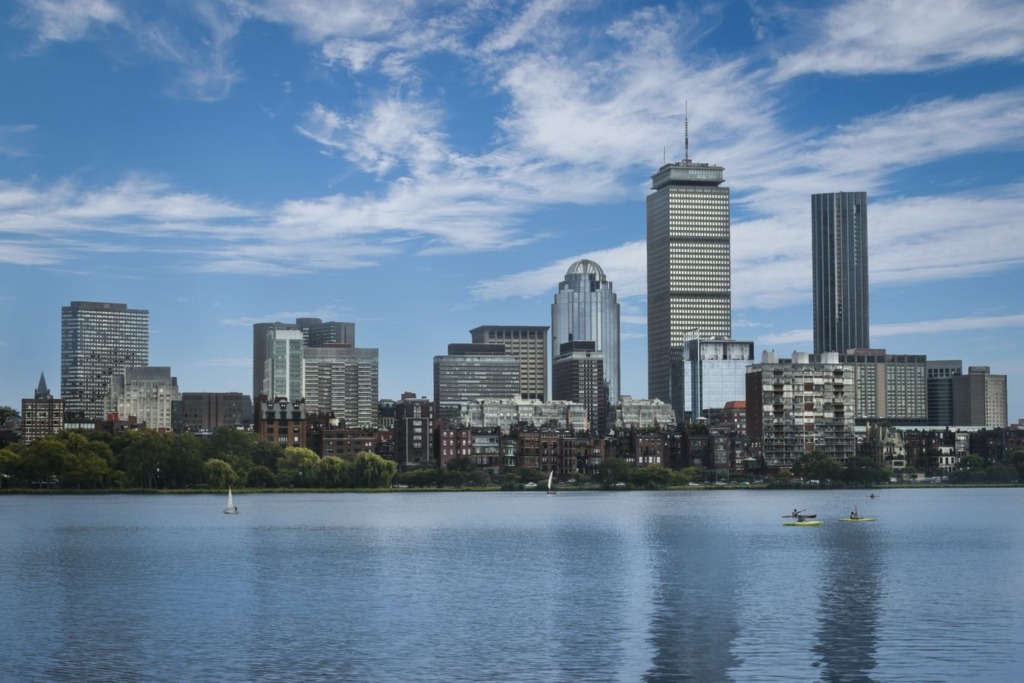Massachusetts
Massachusetts may be small but what it lacks in size, it makes up with diversity and adventure. With sixty percent of the state covered by forests, its west is mountainous, and its east bordered by the ocean, you already know you are up for some pretty great landscapes and outdoor adventure.
Geography
Bordered by the Atlantic Ocean to the east, Connecticut and Rhode Island to the South, New Hampshire and Vermont to the North, and New York to the west — Massachusetts is one of the smallest states in the country. Not as small as Rhode Island or Connecticut, but it is the seventh smallest state in the country.
Small as this state may be, its topography is distinct and surprisingly diverse. It, of course, has the coastal plain region bordered by the Atlantic Ocean. Then it has the eastern region containing Greater Boston. Its west, on the other hand, features a hilly and rather rural landscape. It features part of Massachusetts with the highest elevation.
Much of the state has indeed been deforested and turned into agricultural lands. Still, 62% of Massachusetts continues to be covered by forests, but much of these forests are regenerated forests. Small pockets of older forests remain, though. Like Bartholomew’s Cobble. It continues to hold the rugged landscape said to be created by geologic upheavals from about 500 million years ago. It is dotted with wildflowers and it is best to visit in early May to really see them in full bloom.
History
Like most areas in the country, Massachusetts land was originally inhabited by earlier tribes like the Algonquian, Wampanoag, Narragansett, Nipmuc, and Mahican. Their villages were growing sustainably until the arrival of the Europeans in the early 1600s. Most of the tribes then migrated northeast, a lot were also killed by the disease brought by the Europeans upon exploration and settlement.
Later in the 19th century, the state was one of the first parts of the country to lead the American Industrial Revolution. Massachusetts was transformed from rural land to industrial cities. This industrial boom, however, started to decline in the 20th century, especially during the great depression. This is primarily what led to the decline of the economy and the de-industrialization that would then take place. This is the reason why Massachusetts became somewhat rural and large agricultural once again.
Weather
Massachusetts is characterized as having a humid continental climate featuring rather cold winters and warm summers. For the most part, the climate is pretty mild. The southern coastal areas, of course, have a much more humid and tropical climate. The state fronting the Atlantic Ocean also makes it somewhat vulnerable to hurricanes and tropical storms.
It is a great thing that the state is doing its best to combat signs of climate change. The Commonwealth of Massachusetts is, in fact, committed to cutting greenhouse gas emissions by 85% by the year 2050. It continues to encourage renewable energy over other types of fuel and is simply one of the leading local governments for climate action.
Tourism
We are hoping that all of these climate action initiatives would work to improve the state’s wellbeing. This would allow locals and tourists to continue to enjoy its natural attractions and all that it has to offer. Some of our favorites are, of course, the Mount Greylock State Reservation, Menemsha Hills, and of course the Bash Bish Falls State Park. It is, in our opinion, one of the stops you have to take for the ultimate Appalachian Mountains Road Trip.
Key information about Massachusetts
📍 Area: 27,337km2
👥 Population: 6,892,503
🏛️ Capital: Boston
🏢 Major cities: Salem, Cambridge, Worcester, Plymouth
🔢 Number of counties: 14
📋 Postal Abbreviation: MA
📖 Primary language/s: English
📌 Nearby states: Rhode Island, New York, Connecticut, Vermont

